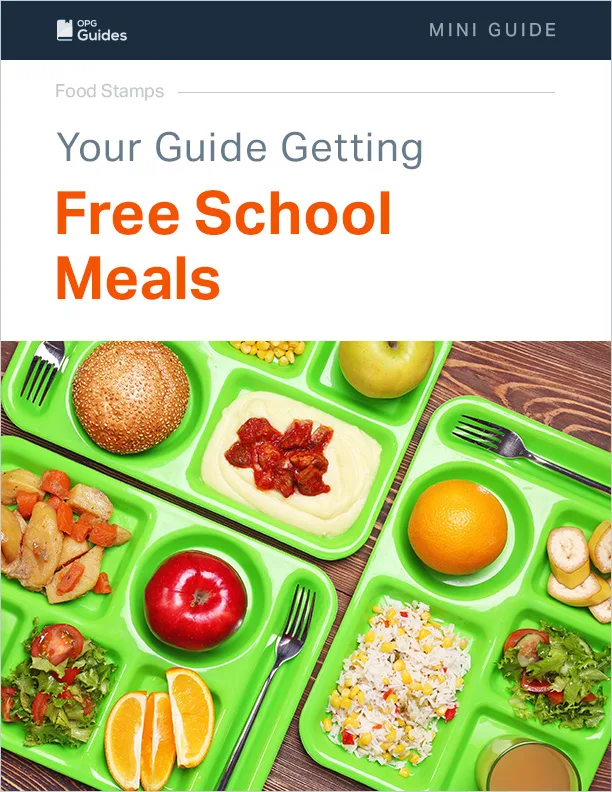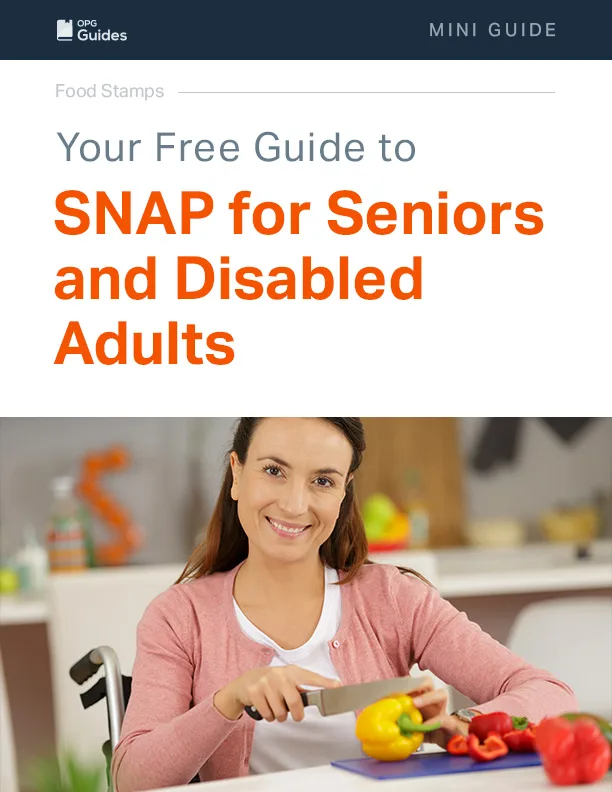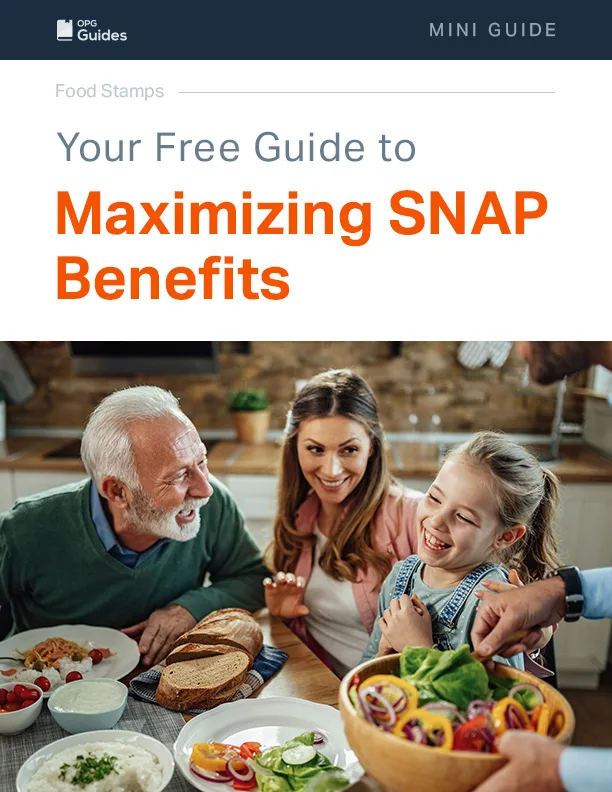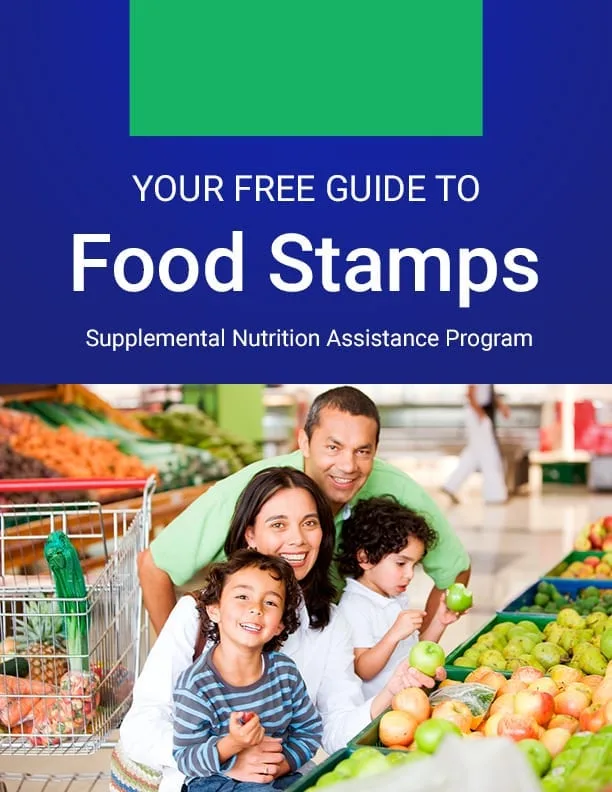Your Free Guide to Buying Food With An EBT Card
Your Free Guide to Buying Food With An EBT Card
We are privately owned and not affiliated with the government in any way or form.

SNAP Benefits: What to Know About the November 2025 Hold
u003cp data-start=u0022151u0022 data-end=u0022379u0022u003eu003cstrong data-start=u0022151u0022 data-end=u0022171u0022u003eNovember 18, 2025 – u003c/strongu003eSNAP benefits have resumed since the federal government shutdown has been lifted.u003c/pu003ernu003cp data-start=u0022151u0022 data-end=u0022379u0022u003eu003cstrong data-start=u0022151u0022 data-end=u0022171u0022u003eNovember 3, 2025u003c/strongu003e – The federal government plans to restart SNAP payments using contingency funds, but the amount won’t cover full benefits. Many households are expected to receive roughly u003cstrong data-start=u0022343u0022 data-end=u0022376u0022u003ehalf of their normal paymentsu003c/strongu003e.u003c/pu003ernu003cp data-start=u0022381u0022 data-end=u0022612u0022u003eu003cstrong data-start=u0022381u0022 data-end=u0022401u0022u003eOctober 31, 2025u003c/strongu003e – Federal judges ordered the Trump Administration to tap contingency funds to keep SNAP running. Even so, states may still face delays in distributing payments, and the Administration could appeal the ruling.u003c/pu003ernu003cp data-start=u0022614u0022 data-end=u0022752u0022u003eu003cstrong data-start=u0022614u0022 data-end=u0022634u0022u003eOctober 27, 2025u003c/strongu003e – The USDA confirmed that November SNAP benefits would u003cstrong data-start=u0022690u0022 data-end=u0022707u0022u003enot be issuedu003c/strongu003e as long as the federal shutdown continues.u003c/pu003e
SNAP Benefits Hit by 2025 Government Shutdown
Note:
The information regarding the SNAP payment freeze below may be outdated as the government shutdown ended in late November 2025, and should be considered historical in context.
The October 2025 federal government shutdown has left millions of SNAP recipients unsure about their food support. Initially, the USDA paused regular monthly payments due to a lack of funding.
Partial Benefits for November
In November, the USDA announced it will tap $4.6 billion from its contingency fund to issue partial SNAP payments. Most households can expect about half of their normal benefits.
What to Expect
- Reduced deposits: Roughly 50% of usual SNAP payments.
- Possible delays: State systems may take time to process partial benefits.
- Longer processing for new applicants or households reporting changes.
Tips for Recipients
- Check your EBT balance online or by phone.
- Prioritize shelf-stable and affordable foods.
- Seek help from food banks, pantries, and local community programs via 2-1-1.
- Stay updated on state announcements for SNAP changes.
With Thanksgiving approaching, local organizations are stepping in to help families affected by reduced SNAP payments:
- Feeding America – Offers a nationwide Thanksgiving meal finder and food box programs.
- AmpleHarvest.org – Helps connect families with nearby food pantries.
- Salvation Army USA – Provides free holiday meals and grocery baskets.
- 2-1-1 (United Way) – Connects callers with emergency food resources and local programs.
- Community and Faith Groups – Many churches and nonprofits are organizing free community dinners.
Introduction
This guide is designed to help you understand the ins and outs of the Supplemental Nutrition Assistance Program (SNAP) and how to effectively use an Electronic Benefits Transfer (EBT) card to obtain essential sustenance for you and your household.
In this guide, we’ll break down the basics of SNAP benefits, explaining how this crucial program supports individuals and families in need. We’ll also dive into the details of the EBT card, clarifying what you can purchase with it and what items are excluded. Whether you’re new to the program or looking for a refresher, our user-friendly approach can empower you with the knowledge to make informed decisions about your nutrition and well-being.
Join us on this journey as we navigate the world of SNAP benefits and EBT card usage together, ensuring you can learn how to make the most of the assistance available.
What is SNAP?
SNAP, also known as food stamps, is a program that helps those facing tough times with their finances. Its main goal is to make sure qualified individuals and families have enough nutritious food to eat, no matter their income.
Let’s say you’re going through a period where it’s a bit harder to make ends meet. If you meet the income guidelines, SNAP can step in to lend a hand.
It gives you a certain amount of money every month that you can use to buy approved food. This way, you can get the nutritious food you and your family need to stay healthy, even if money is tight.
Using SNAP is like having a little extra boost to your budget, specifically meant for groceries. You can use the assistance to buy a variety of food items, like fruits, vegetables, bread, meat, and more. It’s all about ensuring that you have access to the kind of food that’s good for you.
The amount of help you can get from SNAP depends on your family size, income, and some other factors. The idea is to provide the proper support that suits your situation without any judgment.Applying for SNAP is a way to open the door to a better food situation when things are challenging. If you think this might be helpful for you, you can contact your local SNAP office to learn more about the application process. Remember, everyone deserves to have enough food to eat, and SNAP is here to help make that possible.
Contact Information by Location
What is an EBT Card?
An electronic benefits transfer (EBT) card is a helpful tool that connects to the SNAP program. Think of it as a special card that works like a debit card but just for buying food.
If you qualify and get approved for SNAP benefits, the government deposits a certain amount of money onto this EBT card each month. This card is only for buying approved food – it won’t work like a regular credit card for other things. But it can be super handy because you can use it at certain stores to buy groceries.
Here’s a look at how it works.
- You take your EBT card to a store that accepts it (most grocery stores and even some farmers’ markets do).
- You pick out the food you want to buy.
- When you’re at the checkout counter, instead of using cash or a credit card, you use your EBT card.
You’ll have a secret Personal Identification Number (PIN) that you use with the card to ensure it’s secure. You punch in your PIN, and the cost of the food gets subtracted from the amount of money on your EBT card.
If you have more questions about your EBT card or how to use it, you can reach out to your local SNAP office or check out their website.
How Much are SNAP Benefits?
When the government calculates SNAP benefits, they consider a few key factors to make sure the assistance fits the needs of each household. These factors help determine how much money you’ll receive on your EBT card each month.
- Household Size: The number of people living in your household plays a big role. Generally, larger households get more assistance because they need more food to cover everyone’s needs.
- Income: Your household’s income is a major factor. The government looks at your gross income (how much you earn before taxes and deductions) and your net income (what you actually bring home after those deductions). If your income is lower, you’re likely to receive more assistance. But even if you have a moderate to higher income, you might still be eligible for a partial benefit.
- Deductions: The government considers some expenses when calculating SNAP benefits. They deduct certain things like housing costs, medical expenses for elderly or disabled members, and childcare costs. This helps create a more accurate picture of your financial situation.
- Standard Deductions: Some standard deductions are applied to your income before calculating SNAP benefits. These deductions can vary based on household size and circumstances.
- Maximum Benefit: Each year, the government sets a maximum benefit amount. This is the highest amount a household can receive, regardless of their income. If your income is lower, you might get the full maximum benefit, and if your income is higher, you might receive a smaller amount.
- Thrifty Food Plan: The government uses something called the Thrifty Food Plan to estimate how much a household should spend on food each month. This plan is used as a guideline to calculate SNAP benefits. The idea is to help ensure families have enough money to buy nutritious food. Learn more about the Thrifty Food Plan here: https://www.fns.usda.gov/snap/thriftyfoodplan
The goal of SNAP is to provide fair and helpful assistance to those who qualify. That’s why they look at all these factors – to make sure the benefits fit your needs and help you afford the food your family requires.
If your circumstances change, like if your income or household size changes, it’s important to let your local SNAP office know so they can adjust your benefits accordingly.
What Can SNAP Benefits Buy?

The types of food that can be purchased with SNAP benefits can differ from state to state in terms of specific rules and regulations. However, some federal guidelines apply to all states regarding what types of items can generally be purchased using SNAP benefits.
The United States Department of Agriculture (USDA) provides guidelines for allowable and non-allowable SNAP purchases, but states have the flexibility to make certain adjustments based on local preferences and regulations. This means that while the core list of eligible food items is consistent across states, there might be variations in specific details.
In general, SNAP benefits can be used to purchase most food items that are intended for human consumption. This includes:
- Fruits and Vegetables: Fresh, frozen, and canned fruits and vegetables are generally eligible.
- Meat and Poultry: Items like beef, chicken, pork, and seafood are allowed.
- Dairy Products: Milk, cheese, yogurt, and other dairy items are eligible.
- Bread and Cereals: Bread, cereals, rice, pasta, and other grains are typically allowed.
- Snack Foods: Basic snack foods like chips, crackers, and cookies are generally eligible.
- Non-Alcoholic Beverages: Juices, coffee, tea, and other non-alcoholic beverages are usually allowed.
- Seeds and plants, which produce food for the household to eat.
SNAP Restrictions & Food Waivers
However, there are restrictions on certain items that cannot be purchased using SNAP benefits. Thanks to the new 2025 legislation through the One Big Beautiful Bill Act, some states are restricting the foods you can buy with SNAP benefits.
Specifically, the USDA is encouraging states to apply for SNAP Food Restriction Waivers, which would limit the purchase of items considered non-nutritious — such as sugary drinks, candy, and other processed snacks — using SNAP benefits.
The goal of these waivers is to “restore nutritional value” to SNAP by ensuring that taxpayer funds go toward foods that support better health outcomes. However, it’s important to note that these restrictions are not yet in effect.
States are currently in the process of developing and submitting their waiver proposals, with the first wave of approved changes expected to begin rolling out in 2026.
2026 Food Waivers
The table below provides information on which states are in the process of donig this.
Note: this information is updated as of October 2025. View the USDA’s website for more information: https://www.fns.usda.gov/snap/waivers/foodrestriction
| State | Target Starting Date | What Could Change |
| Arkansas | 07/01/26 | Restricts purchase of soda, fruit and vegetable drinks with less than 50% natural juice, unhealthy drinks, and candy. |
| Colorado | 03/01/26 | Restricts purchase of soft drinks. |
| Florida | 01/01/26 | Restricts purchase of soda, energy drinks, candy, and prepared desserts. |
| Idaho | 01/01/26 | Restricts purchase of soda and candy. |
| Indiana | 01/01/26 | Restricts purchase of soft drinks and candy. |
| Iowa | 01/01/26 | Restricts all taxable food items as defined by the Iowa Department of Revenue except food producing plants and seeds for food producing plants. |
| Louisiana | 01/15/26 | Restricts purchase of soft drinks, energy drinks, and candy. |
| Nebraska | 01/01/26 | Restricts purchase of soda and energy drinks. |
| Oklahoma | 01/01/26 | Restricts purchase of soft drinks and candy. |
| Texas | 04/01/26 | Restricts purchase of sweetened drinks and candy. |
| Utah | 01/01/26 | Restricts purchase of soft drinks. |
| West Virginia | 01/01/26 | Restricts purchase of soda. |
Other nationwide restrictions often include:
- Alcoholic Beverages: SNAP benefits cannot be used to buy alcoholic beverages, including beer, wine, or liquor.
- Tobacco Products: Cigarettes, tobacco, and related products are not eligible for purchase using SNAP benefits.
- Hot Prepared Foods: In most cases, hot foods prepared for immediate consumption at the store (like hot deli items) cannot be purchased with SNAP benefits. However, some states have special programs that allow the purchase of hot meals from authorized vendors.
- Non-Food Items: Items like cleaning supplies, toiletries, and pet food are generally not eligible for purchase using SNAP benefits.
- Vitamins and Supplements: Nutritional supplements and vitamins are not typically allowed.
- Vitamins, medicines, and supplements: If an item has a Supplement Facts label, it is considered a supplement and is not eligible for SNAP purchase.
- Live Animals: Except shellfish, fish removed from the water, and animals slaughtered prior to pick-up from the store.
While there’s a general framework for eligible and ineligible items, the specifics might vary by state due to local regulations. If you’re uncertain about whether a particular item can be purchased using your SNAP benefits, it’s a good idea to refer to your state’s official SNAP website or contact your local SNAP office for accurate and up-to-date information.
Spending SNAP Benefits by Location
Extra SNAP Benefits Through the Summer EBT Program
When school is out, SUN Bucks steps in to help families keep food on the table. Officially known as Summer EBT, this program gives families $120 in grocery benefits per eligible school-aged child to use during the summer months—when school meals aren’t available.
You can use SUN Bucks at authorized grocery stores and retailers, just like you would with SNAP. It’s available in the following participating states, Tribes, and U.S. territories, and goes by a few different names depending on where you live:
- Alabama
- American Samoa
- Arizona
- Arkansas
- California
- Cherokee Nation
- Chickasaw Nation
- Choctaw Nation of Oklahoma
- Colorado
- Connecticut
- Delaware
- District of Columbia
- Guam
- Hawaii
- Illinois
- Kansas
- Kentucky
- Louisiana
- Maine
- Maryland
- Massachusetts
- Michigan
- Minnesota
- Missouri
- Montana
- Muscogee Creek Nation
- Nebraska
- Nevada
- New Jersey
- New Mexico
- New York
- North Carolina
- North Dakota
- Northern Mariana Islands
- Ohio
- Oregon
- Otoe-Missouria Tribe
- Pennsylvania
- Utah
- Vermont
- Virginia
- Washington
- West Virginia
- Wisconsin
SUN Bucks can be added on top of other food programs like SNAP, WIC, and even free summer meal sites or grab-and-go SUN Meals in some rural areas.
Who Can Get SUN Bucks?
Your child may automatically get SUN Bucks if your household already receives:
- SNAP
- TANF
- FDPIR
- Or if your child gets free or reduced-price meals at a school that participates in the National School Lunch Program or School Breakfast Program.
If you’re not automatically enrolled, you may still qualify. You’ll need to meet income guidelines and apply through your state’s Summer EBT agency.
How SUN Bucks Are Sent
Once approved, benefits are either:
- Added to an existing SNAP EBT card
- Sent on a separate EBT card
- Or delivered in another way depending on how your state, Tribe, or territory runs the program
What Can SUN Bucks Buy?
You can use SUN Bucks to purchase the same kinds of foods you would purchase using SNAP benefits. So, things like fruits and vegetables, meat, poultry, fish, cereal, bread, and other snack foods are approved.
You can’t use SUN Bucks to buy hot or prepared foods. You also cannot use them to purchase cleaning supplies, household products, medicine, personal care products, or alcohol.
Who Can Qualify for SNAP Benefits?
Eligibility for SNAP is determined by a combination of factors. Here’s a breakdown of who is typically eligible:
- Income: One of the main factors is your household’s income. Generally, if your gross income is less than a certain limit, you may be eligible for SNAP. The specific income limits vary based on your household size. People with lower incomes are more likely to qualify.
- Household Size: The number of people living together in your household matters. Larger households typically have higher income limits. For example, a larger family might have a higher income limit than a single individual.
- Citizenship or Immigration Status: Usually, U.S. citizens and certain eligible non-citizens can qualify for SNAP. Eligible non-citizens might include refugees, asylees, and lawful permanent residents. Undocumented immigrants generally aren’t eligible for SNAP benefits.
- Work Requirements: As of mid-2025, SNAP has implemented stricter work requirements. Previously, adults without children could only receive benefits for a limited period unless they worked at least 20 hours per week or qualified for an exemption. The new rules now extend these requirements to groups that were previously exempt, including:
- Adults aged 55 to 64
- Parents with children 14 and older
- Veterans
- Asset Limits: While most states do not have strict asset limits, a few might consider your financial resources, like bank accounts and property, when determining eligibility. However, the focus is primarily on income and household size.
- Student Status: Most college students aren’t eligible for SNAP, but there are some exceptions. Students who are also parents, enrolled in a work-study program, receiving Temporary Assistance for Needy Families (TANF), or participating in certain job training programs might be eligible.
- Senior Citizens and Disabled Individuals: Senior citizens and individuals with disabilities often have different rules and calculations that may affect their eligibility and benefits.
It’s important to remember that eligibility rules can vary by state and are subject to change, so it’s best to check with your local SNAP office or their website for the most accurate and up-to-date information.
If you think you might be eligible for SNAP, it’s a good idea to apply and see if you qualify. The program is designed to help those who need assistance, and it can make a positive impact on your ability to access nutritious food.
SNAP State Directory of Resources
How to Apply for SNAP and an EBT Card

The application process can vary slightly from state to state. Here’s a general guide on how to apply, along with the different methods available:
Step 1: Gather Necessary Information:
Before you begin the application, gather the required information and documents. This might include proof of identity, income, expenses, and household members.
Step 2: Determine Your Eligibility:
Check the eligibility criteria for your state. This typically involves meeting income limits, household size requirements, and citizenship or immigration status.
Step 3: Choose Your Application Method:
SNAP applications can be submitted through various methods, and the options may vary by state. Here are the common methods:
- Online Application: Many states offer online applications. Visit your state’s official SNAP website and look for the online application portal. Complete the required information and upload the necessary documents digitally. This method is usually the most convenient and allows you to apply from home.
- In-Person Application: Some states have local SNAP offices where you can apply in person. Visit the nearest office, and a staff member will assist you in filling out the application form and provide guidance on the required documents.
- Phone Application: In some states, you might be able to apply over the phone. Call your local SNAP office or a designated phone number to speak with an application assistant who will guide you through the process.
- Mail Application: In a few states, you might be able to request a paper application form by mail. Fill out the form and send it back along with the required documents.
Step 4: Complete the Application:
Regardless of your chosen method, you’ll need to complete the application form with accurate information. Be thorough and honest in providing details about your income, expenses, and household.
Step 5: Submit Required Documents:
Attach the necessary documents to your application. These might include identification, proof of income, rent or mortgage information, utility bills, and any other documents requested by your state’s SNAP office.
Step 6: Review and Confirm:
Review your completed application for accuracy before submitting it. If you’re applying online, double-check the information you’ve entered. If you’re applying in person or over the phone, confirm that the application assistant has recorded your details correctly.
Step 7: Submit Your Application:
Submit your application using the chosen method. Online applications are usually submitted by clicking a “Submit” button. For other methods, follow the instructions provided by the SNAP office.
Step 8: Follow Up:
After submitting your application, the SNAP office will review your information. They might contact you for additional details or documents. Stay in touch with the office and respond promptly if they request any further information.
Remember that the specific steps and methods might vary depending on your state. To get accurate and detailed instructions for applying for SNAP benefits in your state, visit your state’s official SNAP website or contact your local SNAP office. They can guide you through the process specific to your location and circumstances.
Reporting Changes and Updates
Keeping your SNAP benefits accurate and up-to-date requires notifying the SNAP office about any changes in your circumstances. Timely reporting of changes is essential to maintain the accuracy of your SNAP benefits.
Make sure to report changes to:
- Your contact information, including your phone number, email, and address.
- Your income changes, whether due to a job loss or increase in earnings, report it to the SNAP office. This adjustment ensures that your benefits are aligned with your financial situation.
- Your household, such as the birth or adoption of a child, or if someone moves out or moves in, inform the SNAP office promptly. Household size affects benefit calculations.
- Your address. If you move to a new address, let the SNAP office know. This helps ensure that important correspondence reaches you and that your benefits are correctly adjusted based on the cost of living in your new area.
Changes in expenses, medical costs, or childcare expenses might also impact your benefits. It’s important to keep the SNAP office informed about any relevant adjustments.
Depending on your state, there are various ways to report changes. You might be able to report changes online, by phone, in person at a local SNAP office, or by mail. Check your state’s SNAP website for specific instructions.
In some cases, the SNAP office might request documentation to verify the changes you’re reporting. This could include pay stubs, birth certificates, or other relevant documents.
After reporting changes, be attentive to any follow-up communication from the SNAP office. They might request additional information or clarification to ensure accurate adjustments.
Failure to report changes or providing false information can lead to penalties, including overpayment and potential disqualification from the program.
By staying proactive in reporting changes and updates, you help ensure that your SNAP benefits accurately reflect your current situation. This proactive approach benefits both you and the program, ensuring that you receive the support you need while complying with program rules and regulations.
Getting Help and Customer Service

Navigating the world of SNAP benefits can sometimes raise questions or concerns. Whether you’re unsure about the application process, need assistance with your EBT card, or have general inquiries, help is available to guide you through the process.
Local SNAP Office:
Your first point of contact should be your local SNAP office. They are equipped to provide personalized assistance, answer your questions, and help you understand the application process, eligibility criteria, benefit calculations, and any updates related to your case. You can find the contact details for your local SNAP office on your state’s official SNAP website.
Customer Service Hotline:
Many states have a toll-free customer service hotline dedicated to addressing inquiries related to SNAP benefits. The hotline is staffed by knowledgeable professionals who can provide information, address concerns, and guide you through the process. The hotline number is usually available on your state’s SNAP website or through your local SNAP office.
Online Resources:
Your state’s official SNAP website often provides comprehensive information and frequently asked questions that can help you understand the program better. You might find answers to common inquiries and access useful resources that simplify the application process and EBT card usage.
Application Assistants:
If you’re unsure about filling out the application form or need help gathering the necessary documents, consider reaching out to application assistants. These are professionals available at local SNAP offices or community organizations who can provide guidance in person, over the phone, or through online platforms.
Language Assistance:
If you have difficulty communicating in English, many states offer language assistance services. You can request an interpreter to help you with the application process and understand the details.
Accessibility Services:
If you require accommodations due to disabilities, SNAP offices often offer accessibility services. These services ensure that the application process and customer service are accessible to individuals with various needs.
Feedback and Suggestions:
If you encounter any issues with the SNAP application process, EBT card usage, or customer service, don’t hesitate to provide feedback to your local SNAP office. Your insights can help improve the experience for you and others in the future.





